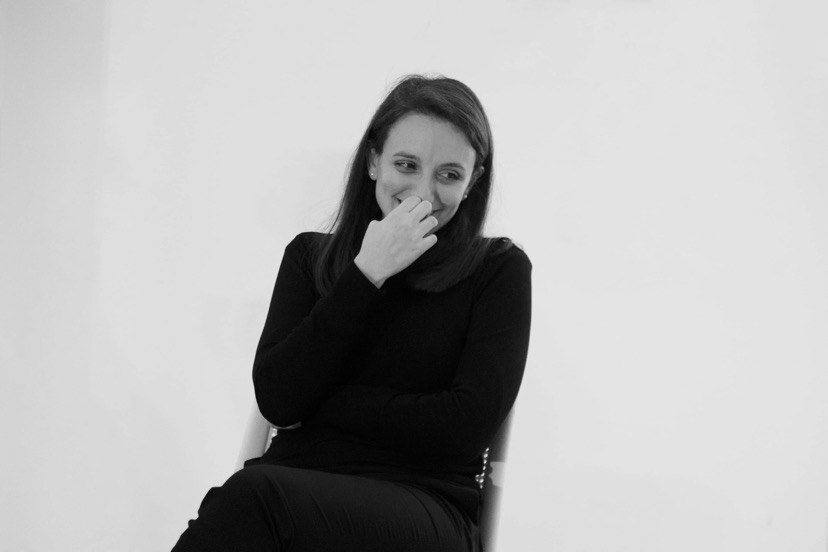Elyse Tonna



Areas of interest: Ecological thinking, Post-fossil fuel cultures, new materialism, post-/Anthropocene, speculative futures, threatened landscapes, living heritage
Why are you a part of Magic Carpets: I was invited by Margerita Pulè, from Unfinished Art Space, and Sabine and Thomas Beusch, from Mahalla Festival, to collaborate with them to develop a residency programme for emerging artists in Malta in 2023. I naturally accepted since the values of the Magic Carpets platform align with personal motivations; supporting emerging artists and their movement across spaces and time.
Magic Carpets project | Beyond What Drifts Us Apart
Practice: Interdisciplinary
Artists: Fernando Ferreira, Marija Rasa Kudabaite, Samuel Ciantar, Rakel Vella, Charlene Galea, Alfred Graf
Beyond What Drifts Us Apart (BWDUA), is a multi-year research project which attempts to uncover the less dominant narratives associated with the environments surrounding historic coastal towers in Malta. Aside from challenging the colonial narratives associated with these sites of cultural significance, BWDUA aims to initiate investigations and understand the consequent relationships developed/developing between their surrounding impacted landscapes and non-human communities. Employing decolonial and post-anthropocentric perspectives, BWDUA recognise that current realities, converging to a climate collapse and an overabundance of technological systems, have exploited natural systems and cycles.
As a project, it therefore further intersects climate justice, territorial defend and bio-cultural diversity preservation.
Past projects
fuse
Position: Curator, Artistic Director and Project Manager
A context-specific and an interdisciplinary, community-driven project, fuse was a two-year process (2019-2021) and involved elements of creative place-making, safeguarding of intangible cultural heritage and active community engagement and inclusion through storytelling. The main scope was to explore, investigate and implement a collaborative project with the communities in the surroundings of the Valletta Design Cluster (VDC), also known as the Biċċerija. A public art exhibition of eight interventions took place between the 30th April – 16th July 2021. The project was nominated as one of the Top 75 Most Inspiring Projects of the New European Bauhaus Awards 2021 and shortlisted for the Arts Council Best Project in the Community 2022.
SURA
Position: Curator
The exhibition SURA at Spazju Kreattiv (2021), complemented by a book, brought to life a collection of contemporary handmade dolls (made by Glen Calleja and Lori Sauer) accompanied by their stories (by Clare Azzopardi). Developed over a 3 year process of research and experimentation, SURA explored the different roles of dolls as experienced across cultures, attempting to understand the human need to create objects in our own likeness or personify belonging or ostracisation. SURA brought aspects inherent to communities and societies; a reflection of place, processes, stereotypes, the popular, the marginalized.
The exhibition was awarded the ARTZID Best Exhibition of the Year 2022.
rajt ma rajtx … naf li rajt
Position: Curator
A solo exhibition by Matthew Attard at Valletta Contemporary, Malta. Deriving from the phrase: rajt ma rajtx … smajt ma smajtx, the title hints at a code of silence behaviour commonly known as omertà. Additionally, it is an invitation to take on a playful, yet critical approach to interpreting socio-political contexts. The intentional modification to the original phrase makes a direct reference to Matthew’s artistic practice, who is in constant dialogue with an eye-tracker. The latter transforms eye movements to machine-generated data, which is in turn moulded by the artist himself, reinforcing a fictitious techno-symbiosis characterization through a creative practice that links the eye-tracker to modes of contemporary drawing.
Throughout the exhibition, the eye-tracker brought to the forefront widespread local realities bound with ongoing complexities related to identity and context. Adopting a tongue-and-cheek approach, the exhibition featured a number of site-specific interventions stemming from eye drawing performances manifested in particular contexts.
SPRING Programme for Emerging Artists by the Gabriel Caruana Foundation
Position: Curator and Co-Creative Director
The SPRING Artistic Programme for Emerging Artists provides a platform where artists are encouraged to flourish, to collaborate, to create new ecosystems. SPRING is a space to reflect, to position oneself between the medium, the space, the collective, and resonate. SPRING is anongoing process of experimentation, critical reflection, and renewal.
The SPRING Programme of Emerging Artists is a tailor-made artistic programme which adapts to the opportunities, challenges and the needs of artists who are seeking to progress, develop or challenge their practice in different ways.
It has insofar hosted 4 solo exhibitions, over 10 collective exhibitions with around 35 participating emerging artists. The programme was developed and is led by the Gabriel Caruana Foundation.
The SPRING Programme was shortlisted for the ARTZID Best Exhibition Programme in 2022.
Why have you chosen to be a curator or why has curatorship chosen you? I would say a bit of both. It was never my intention to become a curator, I barely knew what being a curator meant when I started out. Generally speaking, I believe there is still a major lack of awareness and knowledge about what a curator’s role involves, especially in Malta. On the one hand, I am grateful for the many exchanges throughout the years, with mentors, artists, curators, collaborators and friends who definitely shaped who I am today. On the other hand, I take inspiration from outside contemporary art, and are mainly a reaction to what is happening around us. Beyond the theoretical and conceptual frameworks and ideas, the most important thing to me is to strive to remain open to learning, to stick to core values and to remain humble. Being a curator is just one of many labels, the role entails adaptation, facilitation, mediation and creation.
What do you think is the purpose of art? To break boundaries, binaries and to dream. To speculate, to create opportunities for discussion, to articulate multiple perspectives and differences, to be a means to connect communities amidst their differences.
Contacts
hi[at]elysetonna.com | Instagram | Facebook | www.elysetonna.com